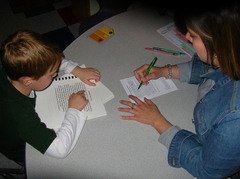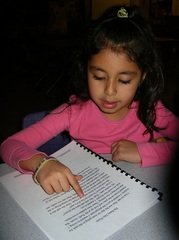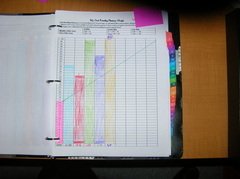DIBELS
Dynamic Indicators of Basic Early Literacy Skills
Jump To Free DIBELS 6th Edition Progress Monitoring Graphs
Okay, so what is DIBELS?
It is an acronym standing for Dynamic Indicators of Basic Early Literacy Skills.
It is simply an early literacy screening instrument to determine children who may be at-risk for literacy problems. It is a series of short tests given to children in kindergarten through grade five to monitor and screen their progress in learning some of the necessary skills to become successful readers.
Dynamic Indicators of Early Literacy Skills is not a perfect literacy test or some magic wand that instantly cures all reading problems. Nor is it an assessment that ruins and controls the school lives of children as some would want you to believe.
The word “DIBELS” can cause this type of polarizing debate which is unfortunate and unnecessary. The people who get caught up in this debate are truly missing the point!
The truth of the matter is when USED CORRECTLY, DIBELS can be an effective part of a school’s literacy program.
 Assessments or screenings do not teach kids how to read. Duh! And no one worth their salt would ever debate the merits of early reading intervention. Effective reading programs determine the skills our kids need and ensure these skills are developed. Using DIBELS, one can effectively measures Phonemic Awareness, Alphabetic Principle, and Oral Reading Fluency; all very important early literacy skills. Anyone who debates that these skills are not important is contradicting mountains of research stating otherwise.
Assessments or screenings do not teach kids how to read. Duh! And no one worth their salt would ever debate the merits of early reading intervention. Effective reading programs determine the skills our kids need and ensure these skills are developed. Using DIBELS, one can effectively measures Phonemic Awareness, Alphabetic Principle, and Oral Reading Fluency; all very important early literacy skills. Anyone who debates that these skills are not important is contradicting mountains of research stating otherwise.
In her book “I’ve DIBEL’d Now What?” Susan L. Hall writes,
“It is a very exciting time to be involved in the field of early reading. We know now more than ever about how students learn to read, and what happens when reading doesn’t come easily. We also know about effective procedures to determine which children are at risk of experiencing reading difficulties, and how to intervene early to help advert later trouble. Early literacy assessment instruments have played a significant role in preventing problems because they enable schools to screen all students for signs of delay as part of a preventative approach. By providing good core reading instruction along with differentiated intervention instruction to small groups of struggling readers, many students will avoid the major problems they would have faced if the reading difficulty had been dealt with much later.”
Susan Hall is right on target! We must use early literacy assessment instruments to help us in our educational decision making. We can defeat specific learning disabilities if we do this. I have seen too many people become very critical of assessments like DIBELS because of their misuse. Drilling and killing nonsense words or asking children to read as fast as they can to improve scores is not the intent of the instrument. Later, I will discuss potential pitfalls that should be avoided when using the DIBELS assessment but for now, know that Katie and I are fans of its proper use!
DIBELS NEXT
In 2010, the University of Oregon released an updated version of DIBELS 6th Edition called DIBELS Next. Schools now have the choice of using the original 6th Edition or the revised version. Our school district made the move to DIBELS Next. We've used DIBELS Next since the 2011-2012 school year. While we like the replacement of the kindergarten Initial Sound Fluency (ISF) measure with a much improved First Sound Fluency (FSF)measure, Katie and I both like the 6th Edition over DIBELS next.
NEW RECOMMENDED BENCHMARK GOALS
For the 2012-13 school year, the University of Oregon released new DIBELS Next recommended benchmark goals. The new goals have generated a lot of debate as they are much higher than the previous goals. The University of Oregon hosted a webinar discussing why the new goals are necessary. You can download their powerpoint slides here:
DIBELS Next Presentation - Why the New Recommended Goals?
PROGRESS MONITORING
 Progress monitoring is a practice that helps teachers use student performance data to continually evaluate the effectiveness of their teaching and make informed instructional decisions. The teacher determines a students' current performance on skills that the student will be learning, identifies achievement goals that the student needs to reach by the end of the year, and establishes the rate of progress the student must make to meet those goals. The teacher then measures the students' academic progress regularly (weekly, biweekly, or monthly) using probes.
Progress monitoring is a practice that helps teachers use student performance data to continually evaluate the effectiveness of their teaching and make informed instructional decisions. The teacher determines a students' current performance on skills that the student will be learning, identifies achievement goals that the student needs to reach by the end of the year, and establishes the rate of progress the student must make to meet those goals. The teacher then measures the students' academic progress regularly (weekly, biweekly, or monthly) using probes.
Each probe samples the entire range of skills that the student must learn by the end of the year, rather than just the particular skills a teacher may be teaching that week or month.

- The teacher graphs a trajectory line between the student's initial level of performance on a specific skills and the end-year goal.
- Then the student plots the level of performance as each probe is administered.
- After noting the pattern of progress, the teacher can adjust instruction to improve student learning.
- If a student's performance falls below the line, the teacher may use more intense instruction (in small groups or one-on-one), reteach the materials, or provide additional opportunities for the student to practice certain skills.
For an in-depth look on Using Data to Improve Student Achievement and how to effectively progress monitor, check out Katie's above link!
DIBELS MEASURES & PROGRESS MONITORING GRAPHS
The Dynamic Indicators of Basic Early Literacy Skills (DIBELS) consist of the following measures (as cited on their website):
- Initial Sounds Fluency (ISF, 6th Edition Only) measure is a standardized, individually administered measure of phonological awareness that assesses a child's ability to recognize and produce the initial sound in an orally presented word.
- First Sound Fluency(FSF, DIBELS Next Only) measure is a standardized, individually administered measure of phonological awareness that assesses a child's ability to recognize and produce the initial sound in an orally presented word.
- Letter Naming Fluency (LNF) is a standardized, individually administered test that provides a measure of risk. Students are presented with a page of upper- and lower-case letters arranged in a random order and are asked to name as many letters as they can.
- Phoneme Segmentation Fluency (PSF) measure is a standardized, individually administered test of phonological awareness. The PSF measure assesses a student's ability to segment three- and four-phoneme words into their individual phonemes fluently. The PSF measure has been found to be a good predictor of later reading achievement.
- Nonsense Word Fluency (NWF) measure is a standardized, individually administered test of the alphabetic principle; including letter-sound correspondence in which letters represent their most common sounds and of the ability to blend letters into words in which letters represent their most common sounds.
- Oral Reading Fluency (ORF) is a standardized, individually administered test of accuracy and fluency with connected text.
For additional FAQ's about DIBELS, check out the Dynamic Measurement Group.
The following table displays the end-year goals by grade level for each measure:
Kinderg.
1st Grade
2nd Grade
3rd Grade
4th Grade
5th Grade
ISF
25+
LNF
40+
37+
PSF
35+
35+
NWF
25+
50+
50+
ORF
40+
90+
110+
118+
124+
Click on the following links to access student progress monitoring graphs by grade level:
- Kindergarten Progress Monitoring Graphs
- First Grade Progress Monitoring Graphs
- Second Grade Progress Monitoring Graphs
- Third Grade Progress Monitoring Graph
- Accelerated ORF Progress Monitoring Graph
Classroom assessments should serve as a meaningful source of information for teachers, helping them identify what was taught well and what students need to work on. Assessments must be followed by high-quality, corrective instruction designed to remedy whatever learning errors the assessment identified. We use the Progress Monitoring Reading Behavior Template to document these errors.
DIBELS NEXT Progress Monitoring Graphs
Kindergarten NEXT Progress Monitoring Graphs
1st Grade NEXT Progress Monitoring Graphs
2nd Grade NEXT Progress Monitoring Graphs
3rd Grade NEXT Progress Monitoring Graph
DIBELS Benchmark Scores and Reading Levels for Grades K-3
Click Here!
U of Oregon Slides From Recommended Goals Webinar
Why U of O Recommends New Goals?





